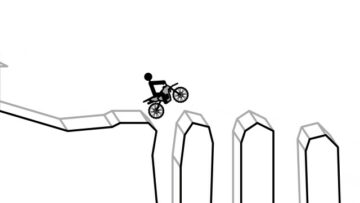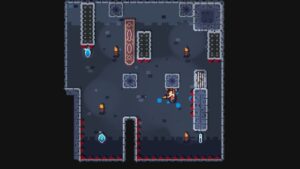There’s a hidden object scene in Ghost Files: The Face of Guilt which perfectly encapsulates the genre. You’re standing over the body of a serial killer who you’ve finally captured, but a twinkle appears on their kevlar jacket. You click on it, and suddenly you’re searching for items in that vest. Among the items in the vest, some of which make sense, like a syringe and some rope, is a conch. That’s right: the serial killer arrived to a planned, methodical killing with a conch. Either they were going to celebrate the murder with a toot on the conch, or they were going to blissfully listen to the sea.
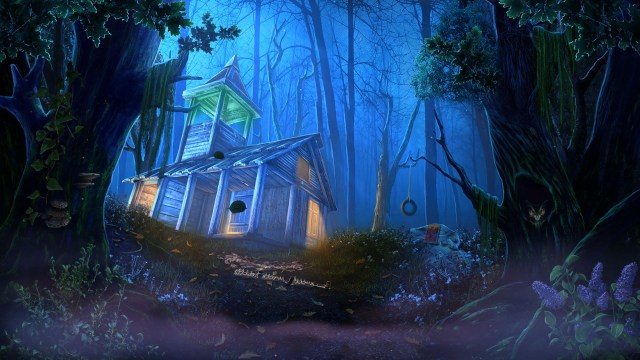

That conch is a perfect example of the empty-headed fun that you get from an Artifex Mundi hidden object game, but it’s also why they’re never going to be taken seriously. Presumably, it’s why Artifex Mundi, as the primary publishers of these games, are never going to change. They will never be able to overcome the silliness of solving crimes by rooting around in messy rooms, so why aim higher?
Ghost Files: The Faces of Guilt is only the second in the Ghost Files series, which – for Artifex Mundi – means it has barely started forming its identity. If you’re trying to remember what the hallmarks of the Ghost Files series are, it’s a more real-world setting, where you use your forensic kit to match fingerprints, compare blood samples and look at striations on bullet casings. But there’s a supernatural edge, as all your Prime Suspecting is threatened by the odd ghost.
The result is a bit of a mix between the supernatural sleuthing of the Demon Hunter series and the procedural crime stuff in Family Mysteries. It doesn’t leave much room for Ghost Files to find its own little space, but these hidden object games rarely feel original anyway. They all echo each other, and Ghost Files: The Face of Guilt does its fair share of echoing.
We apply an asterisk to that statement because Ghost Files: The Face of Guilt does something really well. On occasion (and we won’t spoil why), you get hoicked off to Limbo. These little sojourns into the afterlife are actually pretty great, as all the by-the-books detective work is suddenly rug-pulled by some metaphysical barminess. You’re given an Elemental Forge, a kind of pyramidal alchemist’s box, and you can stuff fire, water, earth and other elements into it. The resulting combinations can be used to fire lava at ice spiders and freeze over lakes. There’s no real explanation to why we’re in these places or how they connect up to the overriding case, but that’s part of their appeal. They stand out like a sore thumb, but they’re fun thumbs that we had a great time thumb-wrestling with.
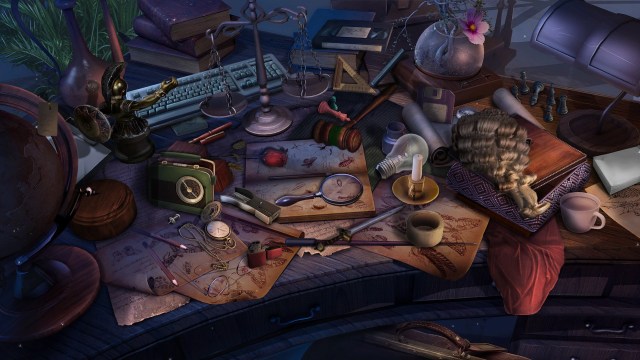

The story is even more unbelievable and ropey than the traditional Artifex Mundi guff. There’s a spate of murders, and the victims all seem to be the jurors in a trial that convicted a serial killer. But that serial killer died in a fire in an asylum, DIDN’T HE? You can probably fill in the gaps of this eye-rolling narrative, which employs such classic cliches as face-swapping and people not checking bodies properly. It’s sub Mills & Boon level, but we’d guess that’s part of the appeal for some people.
As Detective Emily Meyer, you are trying to find the surviving jurors before they get offed in ways that have very little to do with your traditional serial-killing. There’s no ashtrays made out of human skin, here. House fires, gunshots and very publicly throwing someone off a building are all part of the serial killer’s MO, and they’re so careless about it that you wonder why they weren’t caught earlier.
This is all a bit of dressing for some hidden object puzzling. For fans of the genre, it’s worth noting that there’s a lot of hidden object scenes here, with barely any reuse of each background. That gets a big tick in our book, as it doesn’t feel like Artifex are cutting corners. It’s heavy on the ‘interact with stuff before you can spot it’, which is a taste preference (we like them kept to a minimum), and it has a habit of throwing in bizarre items like ‘callipery box’ and ‘medicants’, as if the words mean anything to anyone. But, overall, they are clear, varied, and the usual guilty pleasure.
The minigames are kept to a minimum, and they’re so familiar and easy that we never once used a hint (aside from in the Bonus Episode, but that’s only because we’d finally lost patience with those move-the-knot puzzles where you have to create zero overlaps). Again, that’s our preference, as the minigames can slow things down in other hidden object games.
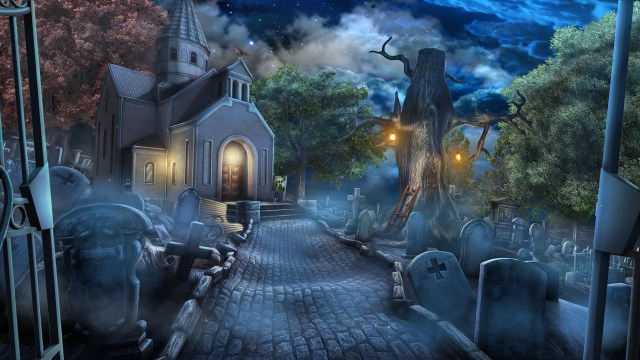

That just leaves the graphic adventure stuff where you’re manipulating objects in your inventory to solve puzzles. Aside from the annoyance that the swabs, UV light and fingerprint spray are perpetually clogging up your inventory, but only get used once in the whole game (inexplicably, Ghost Files: The Face of Guilt gets bored of its forensic kit after the first act), the point-and-click stuff is well done. You rarely get more than three rooms at a time to explore, so it’s on the easy side, but we glided through Ghost Files: The Face of Guilt and barely touched the sides.
If there’s a request for future Ghost Files games, it’s that more is done with Limbo. Tinkering with the Elemental Forge and flitting between the real and metaphysical realms was huge fun, and not used anywhere near enough. The Bonus Episode seemed to realise what it had, and spend almost all of its time here, which we take as an admission that Artifex should use it more next time.
The result is a hidden object game that is slightly better than Artifex Mundi’s batting average. We couldn’t shake the feeling that we’d been here many, many times before with Ghost Files: The Face of Guilt, but that was thrown for a loop by visits to the spirit realm. Suddenly, we felt like we were experiencing – whisper it – new ideas, and the experience got elevated. Next time, we’d like to spend more time with the ghosts of the title.
- SEO Powered Content & PR Distribution. Get Amplified Today.
- PlatoData.Network Vertical Generative Ai. Empower Yourself. Access Here.
- PlatoAiStream. Web3 Intelligence. Knowledge Amplified. Access Here.
- PlatoESG. Automotive / EVs, Carbon, CleanTech, Energy, Environment, Solar, Waste Management. Access Here.
- BlockOffsets. Modernizing Environmental Offset Ownership. Access Here.
- Source: https://www.thexboxhub.com/ghost-files-the-face-of-guilt-review/
- 1
- a
- able
- About
- act
- actually
- admission
- Adventure
- after
- again
- AI
- aim
- All
- also
- among
- an
- and
- any
- anyone
- Anything
- appeal
- apply
- ARE
- around
- as
- At
- average
- background
- BE
- because
- been
- before
- Better
- between
- BIG
- Bit
- blood
- bodies
- body
- bonus
- book
- Box
- Building
- but
- by
- CAN
- captured
- case
- caught
- celebrate
- change
- checking
- Classic
- clear
- click
- connect
- content
- corners
- create
- Crime
- Crimes
- cutting
- died
- do
- does
- done
- down
- each
- earlier
- earth
- easy
- echo
- Edge
- either
- elements
- end
- enough
- episode
- even
- Example
- experience
- experiencing
- explanation
- explore
- Face
- faces
- fair
- familiar
- fans
- feel
- Finally
- find
- fingerprint
- Fire
- fires
- First
- For
- Forensic
- forge
- Freeze
- from
- fun
- future
- game
- Games
- Gaming
- gaps
- Genre
- Get
- Ghost
- given
- going
- great
- had
- has
- Have
- he
- heavy
- here
- hidden
- higher
- House
- How
- HTTPS
- huge
- human
- hunter
- ICE
- ideas
- Identity
- if
- in
- into
- inventory
- Is
- IT
- ITS
- jpg
- just
- kept
- kind
- kit
- leave
- Level
- light
- like
- Little
- Look
- lost
- lot
- made
- make
- many
- Match
- mean
- means
- methodical
- minimum
- mix
- more
- much
- murder
- narrative
- Near
- never
- Next
- no
- not
- noting
- objects
- Odd
- of
- off
- on
- once
- only
- or
- original
- Other
- our
- out
- over
- overall
- overcome
- overriding
- own
- part
- patience
- People
- perfect
- places
- planned
- plato
- plato data intelligence
- platodata
- platogaming
- play
- pretty
- primary
- probably
- publicly
- publishers
- Real
- real world
- really
- realm
- Remember
- request
- result
- resulting
- reuse
- review
- right
- room
- Rooms
- scene
- scenes
- SEA
- second
- seem
- seemed
- sense
- serial
- Series
- setting
- Share
- should
- side
- sides
- Skin
- So
- SOLVE
- Solving
- some
- someone
- something
- Space
- spend
- spirit
- Spot
- stand
- standing
- started
- Statement
- Story
- such
- supernatural
- Take
- taken
- taste
- than
- that
- The
- their
- Them
- These
- they
- things
- this
- those
- three
- Through
- time
- times
- Title
- to
- touched
- traditional
- trial
- up
- use
- used
- very
- victims
- was
- Water
- ways
- we
- well
- were
- What
- where
- Whisper
- WHO
- whole
- why
- will
- with
- words
- Work
- worth
- you
- your
- zephyrnet
- zero

